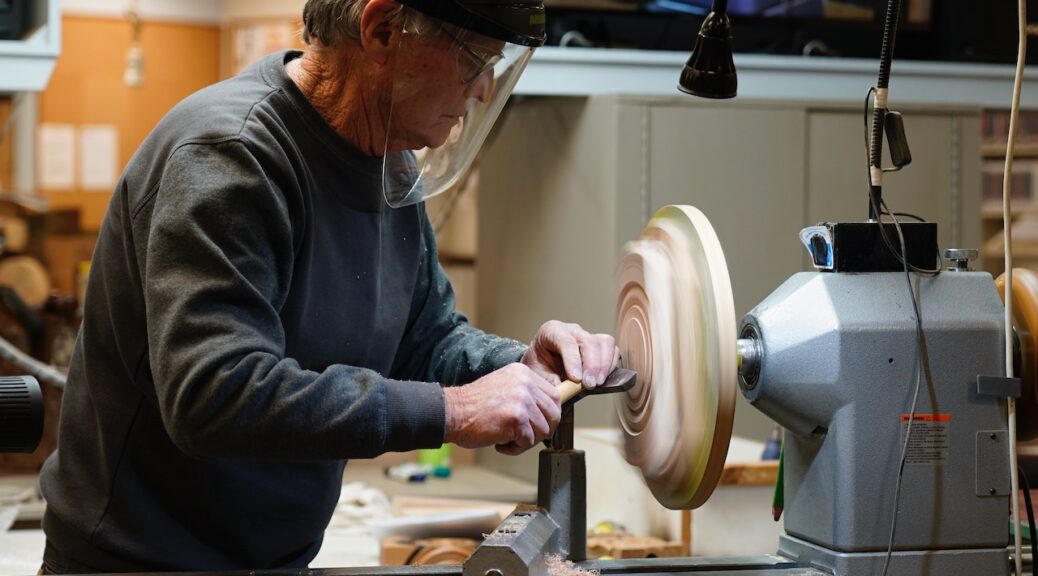Club Meeting: 9 August 2023
Report by: Kieran FitzGerald
John gave a demo tonight which intrigued many of the watchers and I was under strict orders to write the report clearly and accurately so others could make their own versions of the demonstrated pieces. To be frank, when John started out I thought this was going to be a complex piece, but ultimately it turned out to be a relatively simple turning but with dramatic effects.
How do I begin to describe what John made? In essence, it was three stand-alone bud vases, which when placed next to each other were visualised as a single piece with a design on the front. However if the three vases were stood adjacent to each other in a staggered fashion, and rotated on a lazy susan, they presented as having four entirely different faces, each one a clever work of turned and coloured art. The pictures accompanying this report will help make it much clearer what I am trying to describe.
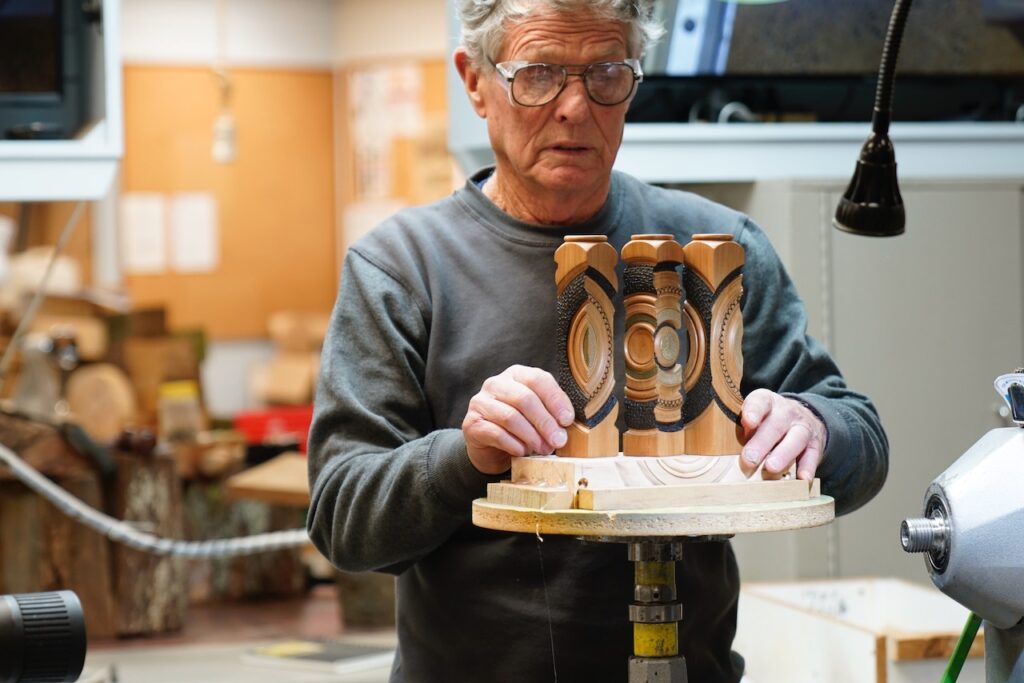
The starting point for this turning is a plan; this is essential as the pieces will be numbered and if constructed in the wrong order will destroy the end design. In fact John showed us an example where he thought he had it right, but when he lined it up the middle piece was wrong.
Take three matched blocks of any size – for the demo John’s blocks were 230mm high and 40mm square. Place the blocks alongside each other and mark the outer pattern dimension by scribing a 160mm diameter circle. Rule a line at each end to mark the finished size of 200mm. Number the face of each block on one end as per the plan (1 to 12; refer accompanying diagram).
Next, tape the three pieces together (faces 1, 2 and 3) and mark the centre. Place the three blocks centrally on a large round faceplate and screw a frame tightly around them to help hold them in place. Initially John screwed the three blocks on to the faceplate at each end as well, but he found that hot melt glue actually was better and held them securely. Check the balance by bringing the faceplate slowly up to speed.
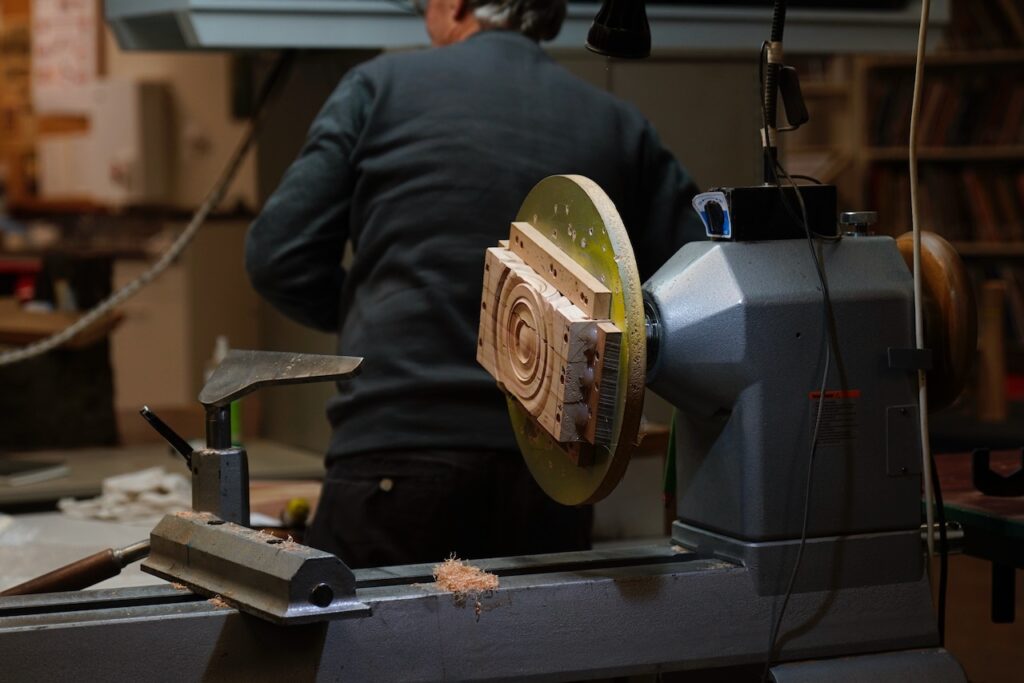
Starting with the 160mm circle whose diameter you have already marked, form a cove or cut of any description. Be careful to get the outer dimension accurate as you will need to repeat this size on each of the four faces otherwise it won’t line up and will look odd. Also take care making this cut as it is a combination of wood and air. Now work your way inwards with any variety of cuts – coves, beads, v cuts, centre dome etc. As you work inwards, subsequent cuts are easier because they are all wood, no air, so more detail can be applied. Shortly you will be rotating the blocks to a new face (follow the numbers as per the plan) and creating a pattern on that face, and then the next, and then the last. The idea here is to create a different design on each face, so that the finished piece, when assembled and rotated on the lazy susan, shows a completely different picture on each face. This is easier said than done; the instinctive inclination is to make fairly similar cuts on each face, because you are working on a smallish canvas and obviously are limited to circular patterns. Be adventurous and use embellishments such as colour, texture, pyro, gilders paste etc. Frame your texturing with a point tool. You can highlight v cuts with a formica burn.
I’ve skipped ahead a bit, but you obviously need to complete one face at a time, including texturing and colouring, before moving on to the next. Don’t make the cuts too deep, just deep enough to show a pattern, and keep the speed fairly high to make a clean cut. All sanding has to be done by hand rather than power sanding; the latter is too brutal and will lose detail on the edges of cuts. All sanding and embellishments are completed while still on the faceplate, but remember that you can return it to the lathe at any time to add any extra detail, because the frame is still mounted. Remove any remaining pencil marks. To take the three blocks out of the frame so he could rotate them, John used isopropyl alcohol to soften the hot melt glue and scraped it off with a chisel.
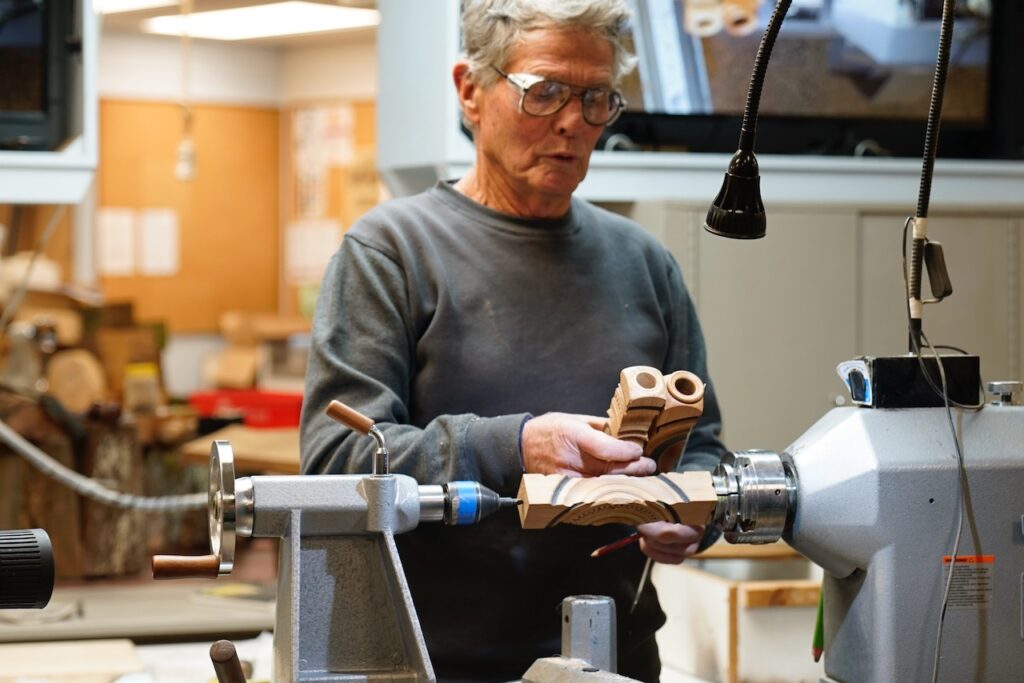
Once the four faces are finished, take the first block and mount it between centres to turn a spigot for a 35mm chuck. Put it in the chuck and mark out for a rolled bead at the top and a pommel which forms a shoulder between the square block and the rounded top. With the tailstock up, make these cuts. Then with a 22mm forstner bit, drill a hole to create a bud vase. Tidy the top, and sand. Repeat this for each of the three blocks. John uses a drop saw to trim off the spigot, leaving a square base.
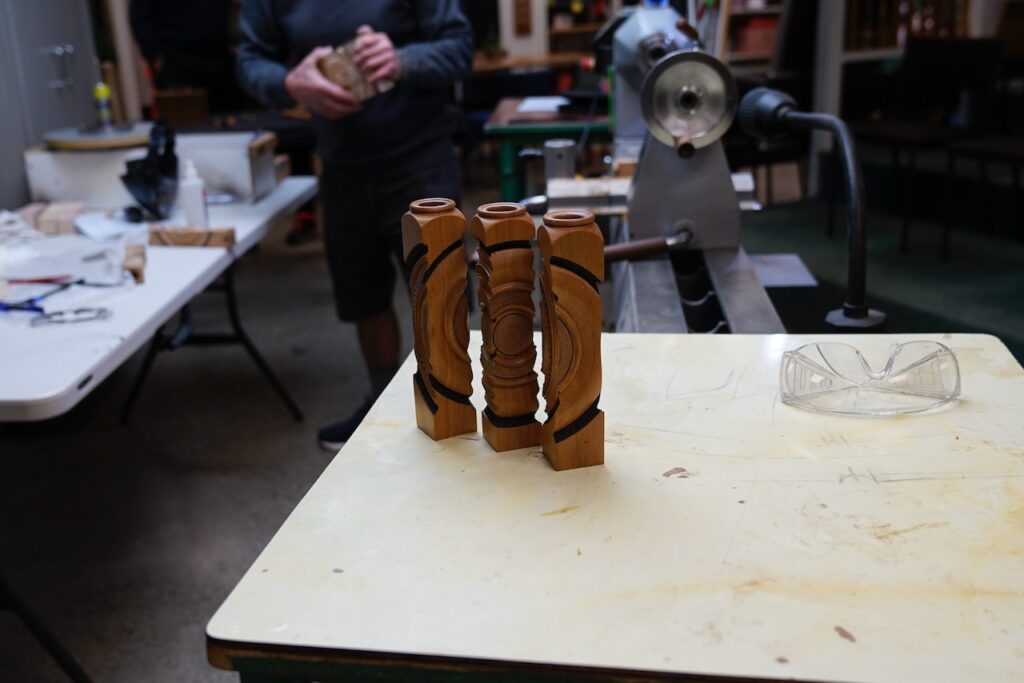
All present were thankful for John’s well planned and very clear delivery of a fascinating project, before slipping out early into a cold winter’s night.
